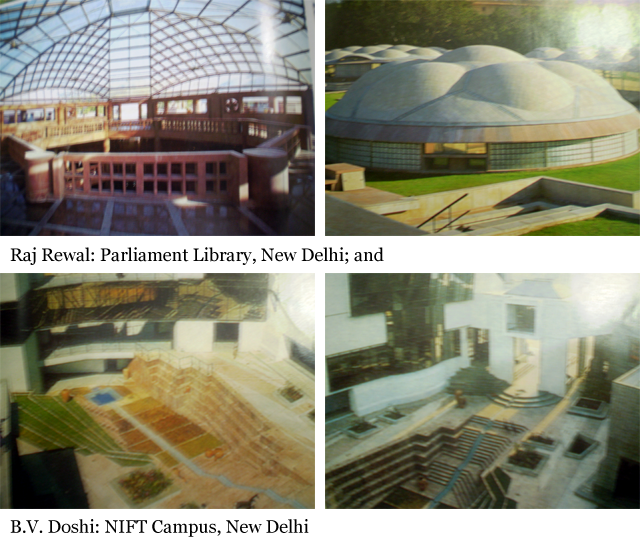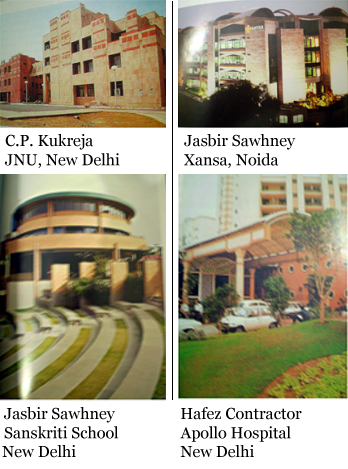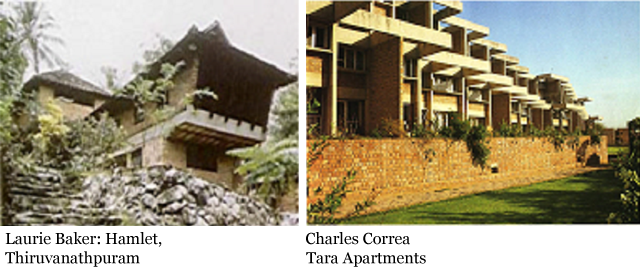Oct 15, 2025
Oct 15, 2025
by Sonam Gupta
Indian architecture is characterized by a plurality that makes generalization difficult. Comment with relevant examples.
“This is the paradox: how to become modern and return to sources; how to revive an old dormant civilization and take part in universal civilization….” - Paul Ricouer
“Today I am accussed of being a revolutionary, yet I confess of having been had one master – the past; and only one discipline – the study of the past.” - Le Corbusier *
Introduction
Indian architecture is indeed not a single entity but a plural manifestation of the construction process being practiced in India. The scene with regards Indian architecture has probably forever been the same, as the regional as well as religious diversity in India always have been myriad. India being a land of various different languages cultures, practices, customs and beliefs amidst these it is but obvious to see numerous built forms because architecture is to a large extent an extension or manifestation of the feelings people of a particular place hold.
It is probably because of this reason, that we can make some brief generalizations about the architecture of various different countries like for instance, we tend relate the shingles to Tibetan region, the Greek architecture is characterized by its orders, massive construction and the monumental scale is related to the gothic architecture, but when it comes to this south eastern part of the world, “India” it becomes difficult not only for us but probably for everyone to come up with a statement which would suffice and summarize it’s long-long past and the significance of the times of yore.
The Present
Talking of the present times, that is, the post independent India, the architecture of India has particularly taken a shape which has to be referred to as “plural”. As one side the newly independent India wants to rediscover its rich historical past , which probably has ever since the Aryan times attracted outsiders, invaders ,traders who when they come bring along with them their culture , which also is accepted by the country without any foregone conclusion as for any its own practiced way of life. At the very same time on the other hand she wants to establish herself in the world as a progressive nation, which accepts the global trends and walks with panache with the current fervor prevalent throughout the globe.
The Plurality
There are many facets or we may say branches stemming out from the single tree of “Indian architecture”. The sense of plurality in India was obvious because of the constant invasions throughout history, but now in today’s time – the plurality would be owing to the fact that even after getting independence from the British rule we haven’t really been able to free our minds of the fact that we once were ruled.
Probably as retaliation to this fact did some strong movements came up, these emphasized upon re-enforcing the Indian tradition in some mode.
These could broadly be categorized as – Anti-colonial, Seeking The Tradition, which could be any form either by reviving any part of India’s historic background or by addressing the regional diversities to strong to be ruled out.
A Quest of Tradition
In around the 1970s, architects in India turned towards India’s traditional architecture for inspiration this ‘going back to roots’ marked the beginning of a new chapter in the evolution of present Indian architecture.
When, we talk of this phase of evolution of the Indian architecture, we know that there was a strong desire with architects to create an ‘Indian-ness’, which has always been marked by no particular symbol or statement or figure but the concept of diversity itself.
Also the diversity in India is not just confined to linguistics or the culture of it but the diversification also extends to it’s – climate, geography and other conditions which mark the locale and hence the site conditions.
Even, with this same feeling of reproduction of India’s past, the modes of interpretation occurred in more than one ways, which were:
Regionalism and its Critical Side
Regionalism is the past and here in the twentieth century, has sometimes been associated with reactionary phenomena, not only from one measure but every approach that is of importance today be it economic or political.
Prefixing this term of regionalism with, “critical” probably implies that there is some kind of a difference between the kind of architecture being born out of inspiration from the past and the architecture continuing from it’s root ,‘the vernacular’. Though places where the vernacular is still existent like for instance the Raghurajpur village, which the INTACH took up, the architect or the architectural group is nothing but merely a way of helping them extend their own roots further and better to strengthen their hold and make stay another bead in the glorifying necklace of India’s characterizing feature of multiplicity.
Technology: A Tyrant
For a newly independent country like ours it would as some see it, be “backward” to cling to the past and not accept the newer giving of the technology, welcomed universally. Therefore in order to project an image of ourselves as that of a continually progressing country we must take an active participation in the technological vogue creating ripples on the surface of the earth. It is of this reason that, even in a land of traditional cultures we have architects making buildings, which are nothing less than a virtual city or dream far kept from reality, for instance buildings like the Vastu in Mumbai by Hafez contractor which is spelling whim, these days.
Would You Call These Similar?

Both the architects though derive their inspirations from their roots.
“Technological Plurality” May We Call It?

Simply Diverse….

Conclusion
Architecture in India can have numerous facets to itself, what is presently in vogue is also not just one single entity but an amalgam of the past reinvents as well as the technological advances being worked on all through the planet.
It is obvious for a country like India to show a persona of this kind in her built forms, as since the times immemorial she has been accepting creations of myriad conducts. Even Now, when it has been over half a century since she got her independence, she is flanked by dazzling styles of construction. Since, she has always promoted and supported diverse genres she well deserves a dressing in the form of architectural manifestations, which are unusual, curious yet characterized by distinct plurality about them.
* Architecture + Design, Volume XXI December 2004, Article by Prabhakar Begde.
28-May-2010
More by : Sonam Gupta